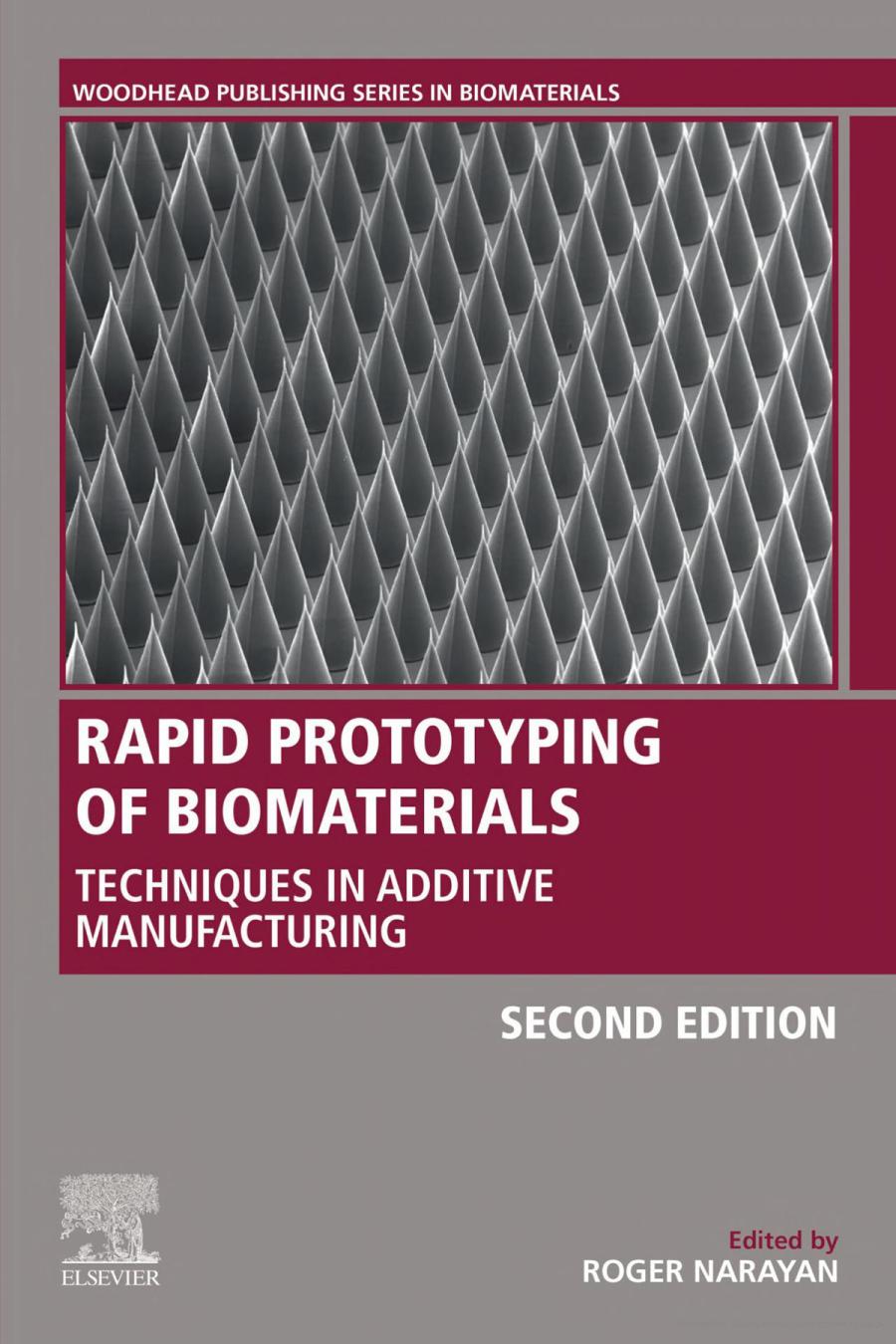

Most ebook files are in PDF format, so you can easily read them using various software such as Foxit Reader or directly on the Google Chrome browser.
Some ebook files are released by publishers in other formats such as .awz, .mobi, .epub, .fb2, etc. You may need to install specific software to read these formats on mobile/PC, such as Calibre.
Please read the tutorial at this link. https://ebooknice.com/page/post?id=faq
We offer FREE conversion to the popular formats you request; however, this may take some time. Therefore, right after payment, please email us, and we will try to provide the service as quickly as possible.
For some exceptional file formats or broken links (if any), please refrain from opening any disputes. Instead, email us first, and we will try to assist within a maximum of 6 hours.
EbookNice Team

Status:
Available0.0
0 reviews

ISBN 10: 0081026633
ISBN 13: 9780081026632
Author: Roger Narayan
Rapid Prototyping of Biomaterials: Techniques in Additive Manufacturing, Second Edition, provides a comprehensive review of emerging rapid prototyping technologies, such as bioprinting, for biomedical applications. Rapid prototyping, also known as additive manufacturing, solid freeform fabrication, or 3D printing, can be used to create complex structures and devices for medical applications from solid, powder or liquid precursors. Sections explore a variety of materials, look at applications, and consider the use of rapid prototyping technologies for constructing organs. With its distinguished editor and international team of renowned contributors, this book is a useful, technical resource for scientists and researchers in academia, biomaterials and tissue regeneration.
Chapter 1: Introduction to Rapid Prototyping of Biomaterials
Abstract
1.1 Introduction
1.2 Definition
1.3 Basic Process
1.4 Additive Manufacturing Systems and Classification
1.5 Rapid Prototyping of Biomaterials
1.6 Future Trends
Further Reading
Chapter 2: 3D Printing of Metals in Rapid Prototyping of Biomaterials
Abstract
2.1 Introduction
2.2 Techniques for Metallic Biomaterials
2.3 3D Printed Metallic Biomaterials
2.4 Challenges and Active Research
2.5 Conclusion
Chapter 3: Freeform Fabrication of Nanobiomaterials Using 3D Printing
Abstract
3.1 Introduction
3.2 Laser-Based SFF Techniques
3.3 Droplet-Based SFF Techniques
3.4 Nozzle-Based SFF Techniques
3.5 Extrusion Freeforming of Biomaterial Scaffolds
3.6 Dry Powder Printing
3.7 Conclusion
Chapter 4: Rapid Prototyping Techniques for the Fabrication of Biosensors
Abstract
4.1 Introduction
4.2 Microfluidic Systems
4.3 Functionalization
4.4 Biomaterial Compatibility
4.5 Conclusion and Future Trends
4.6 Further Information and Advice
Chapter 5: Rapid Prototyping Technologies for Tissue Regeneration
Abstract
5.1 Introduction
5.2 Laser-Assisted Techniques
5.3 Extrusion-Based Techniques
5.4 Inkjet Printing
5.5 Conclusions and Future Perspectives
Chapter 6: Rapid Prototyping of Complex Tissues with Laser-Assisted Bioprinting (LAB)
Abstract
Acknowledgments
6.1 Introduction
6.2 Rationale for LAB in Tissue Engineering
6.3 Terms of Reference for LAB
6.4 LAB Parameters for Cell Printing
6.5 High-Resolution and High-Throughput Considerations
6.6 Applications
6.7 Conclusion
Chapter 7: Hydrogels for 3D Bioprinting-Based Tissue Engineering
Abstract
7.1 Introduction
7.2 Biomaterials in Tissue Engineering
7.3 Commonly Used Hydrogels
7.4 Applications
7.5 Conclusion
Chapter 8: Biofabrication of Tissue Perfusion Systems and Microvasculatures
Abstract
8.1 Introduction
8.2 Perfusion in Native Tissues
8.3 Fabricating Perfusion Systems
8.4 Additional Considerations
8.5 Future Opportunities
Chapter 9: Feasibility of 3D Scaffolds for Organs
Abstract
9.1 Introduction
9.2 Overview of Organ Fabrication
9.3 Physical Properties of Scaffolds
9.4 Temporal Expectations
9.5 Biomaterials and Scaffold Interactions
9.6 Material Characteristics
9.7 Biofabrication Processes
9.8 Conclusion
9.9 Further Information and Advice
Chapter 10: Biofabrication for 3D Tissue Test Systems
Abstract
Acknowledgments
10.1 Introduction
10.2 Overview of Tissue Test Systems
10.3 Key Research Questions
10.4 Biology
10.5 Biological Models and Features
10.6 Fabrication and Culturing
10.7 Analysis and Validation
10.8 Interpretation and Outcomes
10.9 Conclusion
10.10 Further Information and Advice
Chapter 11: 3D Bioprinting Technologies for Tissue Engineering Applications
Abstract
Acknowledgment
11.1 Introduction
11.2 Bioprinting Methods
11.3 From Medical Imaging to Bioprinting
11.4 Applications in Regenerative Medicine
11.5 Current Limits and Future Directions
11.6 Conclusion
Chapter 12: Rapid Prototyping Technology for Bone Regeneration
Abstract
Acknowledgment
12.1 Introduction
12.2 Bone Properties and Modeling
12.3 Bone Tissue Engineering
12.4 Conventional Scaffolds
12.5 Cell Printing for Bone
12.6 Future Trends
12.7 Conclusion
Chapter 13: Additive Manufacturing of a Prosthetic Limb
Abstract
13.1 Introduction
13.2 Design Goals
13.3 Biomimetic Design Approaches
13.4 Functionality Integration
13.5 Sustainable Design Practices
13.6 Tactile Feedback Benefits
13.7 Design Flexibility
13.8 Conclusion
Chapter 14: Using Rapid Prototyping in Prosthetics: Design Considerations
Abstract
14.1 Introduction
14.2 History of Prosthetic Fabrication
14.3 Design Considerations
14.4 Technical Process
14.5 Conformity Testing
14.6 Medical Device Provider Debates
14.7 Conclusion
rapid prototyping of biomaterials
rapid prototyping of biomaterials principles and applications
rapid prototyping has been used successfully
rapid prototyping could be advantageous
rapid prototyping in biomedical field
Tags: Roger Narayan, Rapid Prototyping, Biomaterials, Techniques